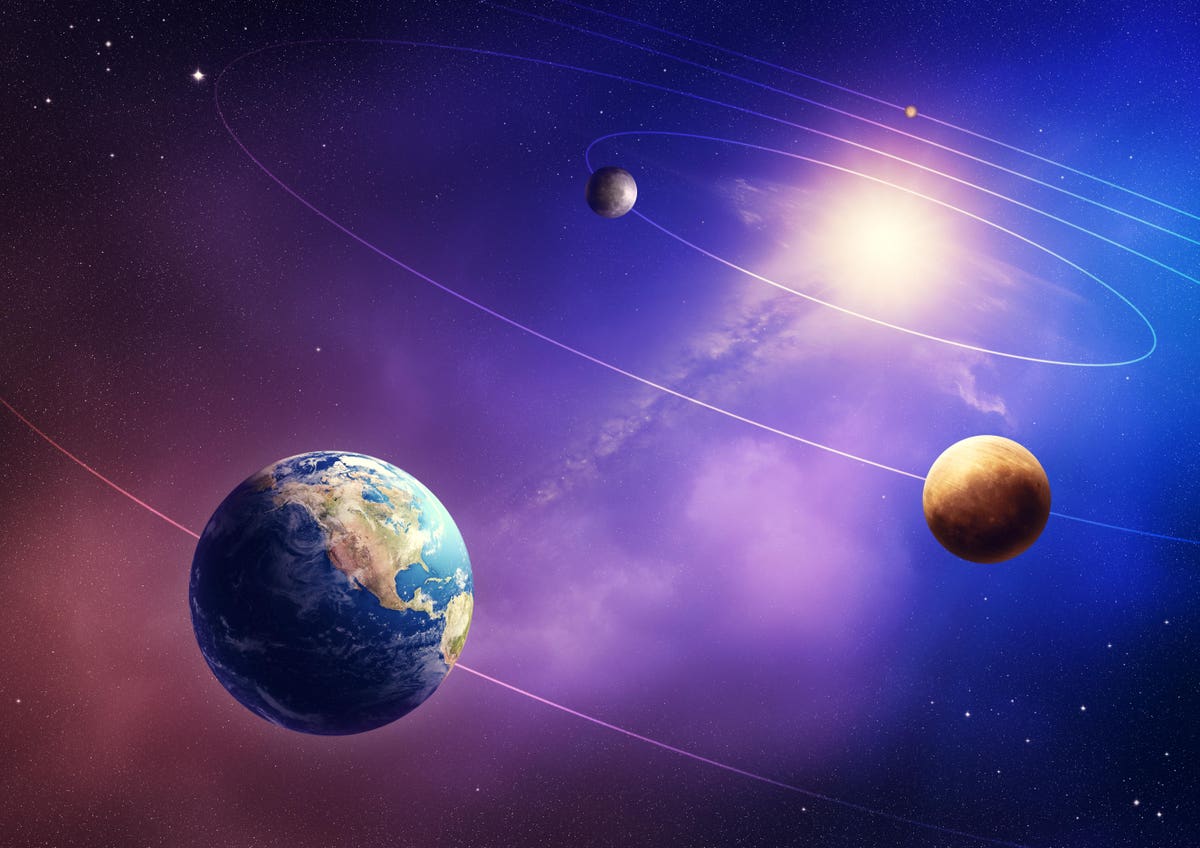Anyone who ever looks at the night sky will know that the planet Venus has been the brightest object for most of 2023.
That is about to end, with Earth’s hotter sister planet now on the wane. In mid-August it will be lost in the sun’s glare only to emerge into the pre-dawn sky in September.
However, before it fades from view the “Evening Star” has a fantastic finale to perform.
Maximum Brilliance Explained
This Friday, July 7 will see Venus at its “maximum brilliance.” It will effectively be super-bright all weekend and for a few nights beyond, but Friday sees the planet reach a brilliant magnitude of -4.7 while as high above the western horizon as it’s possible to see at this moment.
The outer planets are at their brightest to us on Earth as their annual opposition—the moment when Earth is between the sun and the planet. That’s when a planet’s disk is 100% illuminated as seen from Earth. That’s not the case with Venus.
Although Venus is currently very close to Earth, it’s becoming a slim crescent as it slips into the sun’s glare. In fact, this Friday the planet is only a 26% illuminated crescent.
Its brightness comes from the fact that it’s cloaked in many layers of highly reflective sulfuric acid clouds, with the uptick caused by it getting closer and closer to Earth. Astronomers call this albedo—and Venus has the highest albedo of any planet in the solar system, reflecting between 75-84% of sunlight, according to Big Think.
Watching Venus at its Brightest
All you need to do is to go outside just after sunset on Friday—or through the weekend—and look to the western horizon to see Venus shining very brightly. You don’t need binoculars or a telescope, just your own naked eyes. As the twilight deepends, Venus will become more obvious and shine as brightly as it ever gets.
If it’s cloudy, don’t despair. The Virtual Telescope Project will broadcast views of Venus at peak brilliance at 17:30 EDT (21:30 UTC) on Friday, July 7. It uses two powerful 14-inch and 17-inch robotic telescopes based in Ceccano, Italy.
In the weeks after, Venus will rapidly drop from the evening sky, emerging in the morning sky in August—and then quickly reach its maximum brilliance. For that, get your alarm set for the pre-dawn hours of September 19, 2023!
Wishing you clear skies and wide eyes.
Read the full article here





